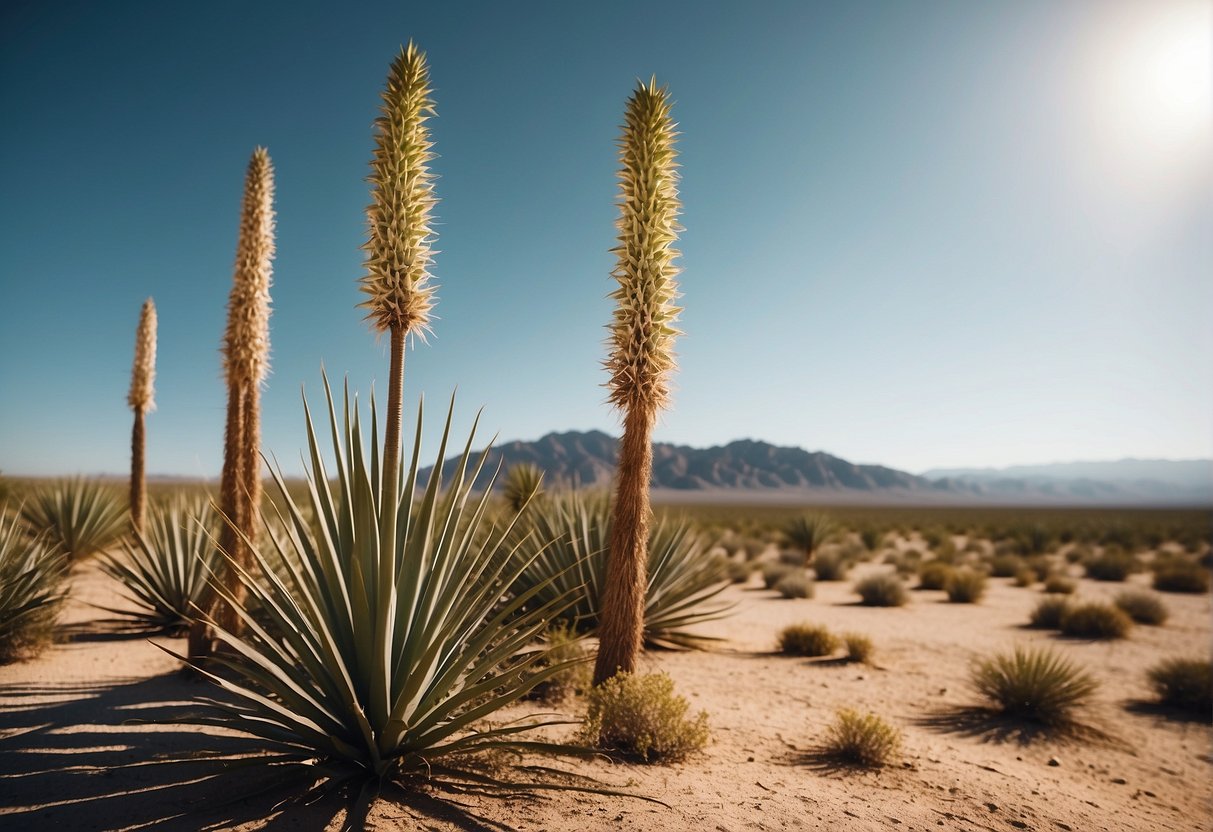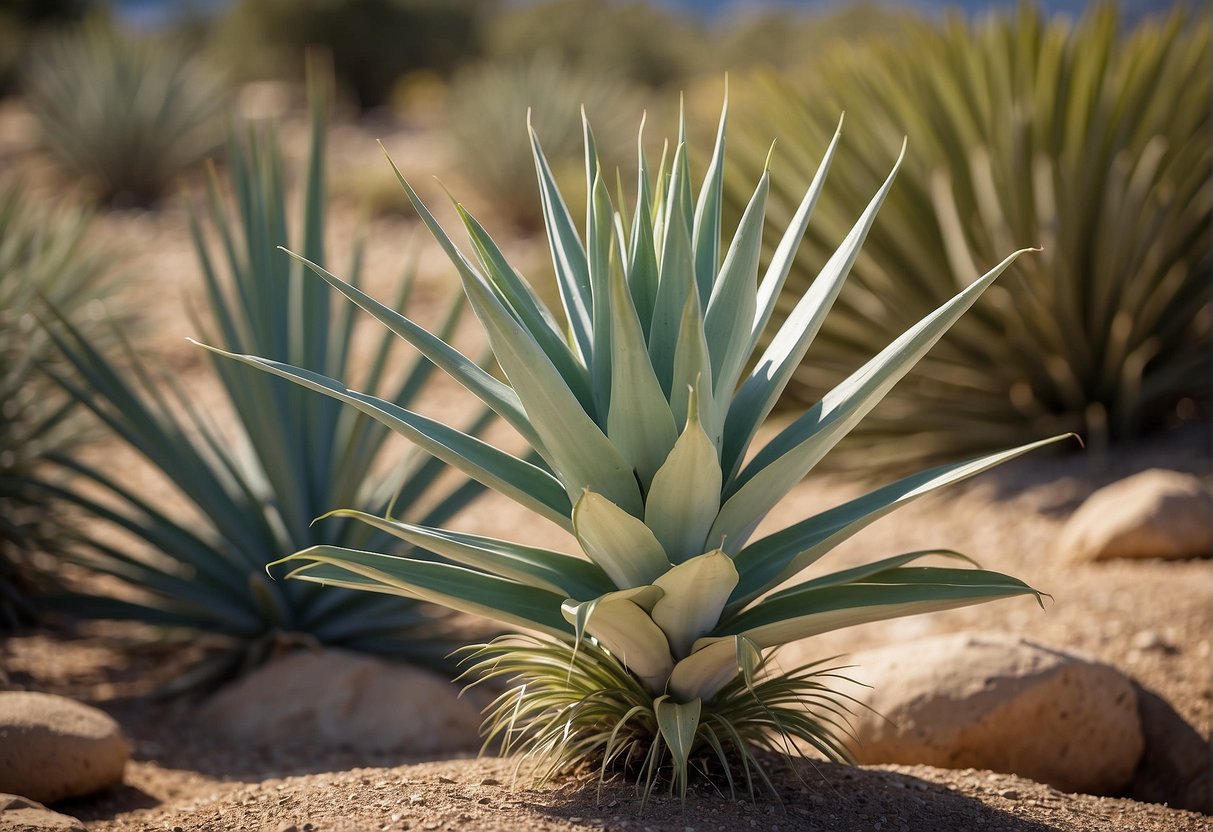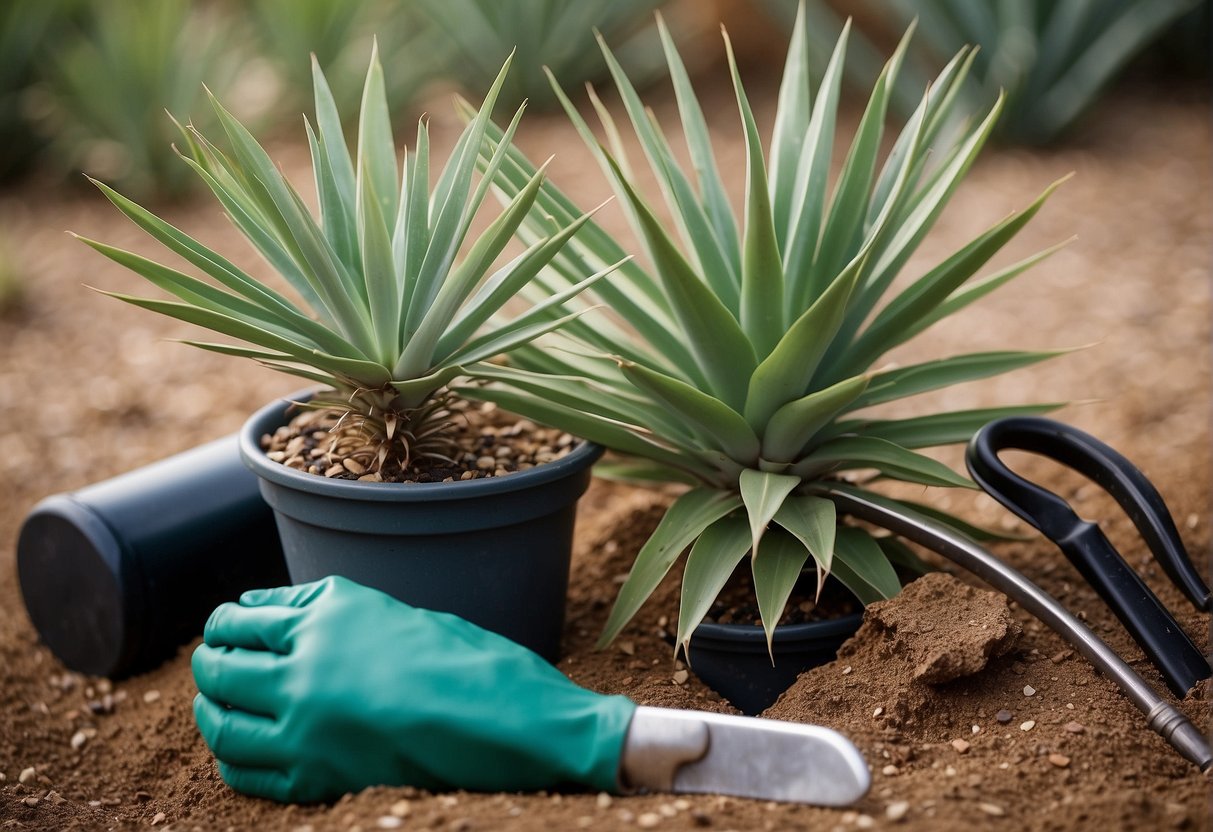Why Are Yucca Plants Sharp: Understanding the Botanical Reasoning
Yucca plants are recognized for their pointed leaves, which have the potential to inflict severe wounds if not managed with caution. It might be curious to think about why these plants developed to possess such hazardous characteristics. In our discussion, we will delve into the causes behind the pointed nature of yucca leaves and the evolutionary developments that have enabled their survival in various habitats.

Adaptations and Characteristics
Yucca plants are native to arid regions of North and Central America, where they have adapted to survive in harsh conditions. The sharp leaves of yucca plants serve several purposes. First, they act as a deterrent to herbivores, such as deer and rabbits, which might otherwise eat the plant. Second, the sharp leaves help to reduce water loss by deflecting sunlight and reducing the surface area of the plant exposed to the sun. Finally, the sharp tips of the leaves can be used to anchor the plant in the ground, helping it to withstand strong winds and other environmental stresses.
Key Takeaways
- Yucca plants have evolved sharp leaves as a defense mechanism against herbivores and to reduce water loss.
- The sharp tips of the leaves can also help the plant to anchor itself in the ground.
- Yucca plants are adapted to survive in arid environments and have developed a number of strategies to conserve water and withstand environmental stresses.
Adaptations and Characteristics

Physical Features
Yucca plants are known for their sharp, sword-shaped leaves that can grow up to several feet in length. The leaves come in a variety of colors including white, green, cream, and blue-green, and have a rough texture. The leaves are arranged in a rosette form, with the rosettes growing to different heights and sizes depending on the species.
The stalk of the yucca plant also varies in height, with some species growing up to 30 feet tall. Yucca plants are drought-tolerant and hardy, making them suitable for growing in full sun and a range of temperatures and zones. They prefer well-draining soil and are often found growing in sandy areas.
Survival Mechanisms
The sharp leaves of the yucca plant serve as a defense mechanism against predators. The spiky texture and form of the leaves make it difficult for animals to eat the plant or use it for shelter. Additionally, the white, cream, or green color of the leaves helps to reflect sunlight, reducing the amount of heat absorbed by the plant.
Yucca plants are also adapted to survive in dry conditions. Their drought-tolerant nature allows them to thrive in areas with little water, and their evergreen leaves ensure that they are able to photosynthesize year-round. The ability to grow in a variety of soil types and tolerate poor drainage also helps the yucca plant survive in harsh environments.
Overall, the yucca plant’s adaptations and characteristics make it a hardy and versatile plant that is well-suited to survive in a range of conditions.
Care and Cultivation

Yucca plants are relatively low-maintenance and easy to care for, making them a popular choice for both indoor and outdoor spaces. Proper care and cultivation can help ensure that your yucca plant remains healthy and sharp.
Planting and Maintenance
When planting yucca plants, it is important to choose a location that receives plenty of sunlight and has well-draining soil. Yucca plants require minimal watering and can become susceptible to root rot if overwatered or planted in soil that does not drain well.
Regular maintenance of yucca plants includes pruning dead or damaged foliage and removing any offsets that may grow from the base of the plant. Yucca plants are relatively slow-growing and do not require frequent pruning.
Propagation and Growth
Yucca plants can be propagated through cuttings or offsets. Cuttings should be taken in early spring and planted in well-draining potting soil. Offsets can be removed from the base of the plant and replanted in their own container.
Yucca plants are perennial and can grow up to 10 feet tall. They produce tall spikes of white flowers in the summer.
Pests and Problems
Yucca plants are generally resistant to pests and disease. However, they can be susceptible to mealybugs, aphids, and scale. Regular inspection and treatment as needed can help prevent infestations.
Root rot can occur if the plant is overwatered or planted in soil that does not drain well. To prevent root rot, ensure the plant is planted in well-draining soil and water sparingly.
Overall, yucca plants are a low-maintenance and easy-to-care-for plant that can add a touch of sharpness to any space. With proper care and cultivation, your yucca plant can thrive for years to come.
Frequently Asked Questions
How should one treat a puncture wound from a yucca plant?
If you get punctured by a yucca plant, the first step is to clean the wound thoroughly with soap and water. After that, you should apply a sterile bandage to the wound and keep it covered until it heals. If the wound is deep, or if you experience any signs of infection, such as redness, swelling, or fever, you should seek medical attention.
What are the symptoms of yucca plant poisoning in humans?
Yucca plants are not generally considered toxic to humans. However, some people may experience allergic reactions to the plant, which can cause symptoms such as skin rash, itching, and swelling. In rare cases, ingestion of yucca plants can cause gastrointestinal upset, including nausea, vomiting, and diarrhea.
Can yucca plants cause skin irritation, and how can it be treated?
Yes, yucca plants can cause skin irritation in some people. If you come into contact with a yucca plant and experience skin irritation, the first step is to wash the affected area with soap and water. You can also apply a cool compress to the area to help reduce swelling and itching. If the irritation persists or becomes severe, you should seek medical attention.
Is any part of the yucca plant toxic to humans or animals?
While yucca plants are not generally considered toxic to humans or animals, some species of yucca contain saponins, which can be toxic in large amounts. Ingestion of yucca leaves or seeds can cause gastrointestinal upset, including nausea, vomiting, and diarrhea. Ingestion of large amounts of yucca can also cause liver damage in some animals.
What should be done if one experiences an eye injury from a yucca plant?
If you experience an eye injury from a yucca plant, the first step is to flush your eye with clean water for at least 15 minutes. You should then seek medical attention as soon as possible, as eye injuries can be serious and may require treatment to prevent permanent damage.
Do yucca plants naturally have sharp edges or thorns?
Yes, yucca plants naturally have sharp edges and thorns. These adaptations help the plant to protect itself from predators and to conserve water in arid environments. While the sharp edges and thorns can be a hazard to humans and animals, they are an important part of the plant’s natural defense mechanisms.

